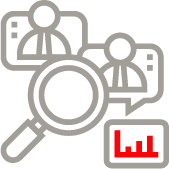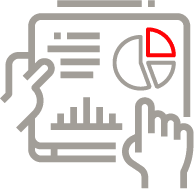Patent Due Diligence: Don’t Make the Easy Things Hard

For patent due diligence advances in automated approaches to strategic patent intelligence pave the way for increased efficiency and reduced transaction costs.
Due diligence is the essential requirement in a transaction to establish ‘what’s going on’. It is about identifying risks that might otherwise trip-up a purchaser on the foundational principle of let the buyer beware. Patents have always been an important aspect of this and more so today than ever before.
What’s involved in patent due diligence?
In an M&A context, patent due diligence is the need to establish that the business being bought or sold has all the rights necessary to carry on. This requires at a minimum:
- Reliable scheduling of patents in a form that can be rapidly reviewed
- Estimating costs for managing the portfolio and how it fits with your existing portfolio
- A picture of how the target asset compare with other owners of similar patented technologies
- An understanding of how existing patent licenses bolster or weaken the commercial position
- Whether there is significant litigation risk, either now or in the foreseeable future
What’s the problem?
The problem has always been that due diligence is slow and expensive. Too much time reviewing documents and not enough time to identify and resolve issue that arise. Let’s consider this challenge in the context of a typical transaction:
- Patents owned – a typical portfolio for a business with more than $1B of revenue is 250 patent families – each with say 3 grants or applications across a range of international patent offices (countries). The minimum information required for each patent is description, age and status.
- Licensed patents – the patent licenses need to be categorized as “in” (granted to the business) or “out” (granted by the business). These are complex agreements and due diligence means conducting a detailed review. Material terms include not only the patents, the scope of the license (exclusive/non-exclusive), term and financials (in particular royalty payments). You can reasonably expect there to be 20 or more agreements of this sort.
- Used, but not owned or licensed – this is commonly referred to as third party infringement risk. Some of this will be known (actual or threatened litigation) but most of this risk falls into Rumsfeld’s “unknown unknowns”.
It’s easy to see why conventional manual review might be slow and expensive. Let’s assume that you outsource this task to external advisers charging $250ph. If we further assume that it takes an hour to review a patent and 3 hours to review a license, that’s $80,000 before you are in any position to actually do anything. In terms of time, that’s over 300 hours, equivalent to 4 FTE weeks. This back of envelope calculation ignores infringement risk, which is often sidestepped as being too hard.
Further reading and our report
Nigel Swycher, LexisNexis® Cipher CEO, goes on to explore alternative approaches to this manual review and provides an overview of where an efficient approach to due diligence is beneficial,
Efficient due diligence paves the way to real risk mitigation and gives you the opportunity to contribute to any commercial transaction with strategic insights.
Follow our four-step process and reap the rewards of taking an efficient approach to due diligence.






